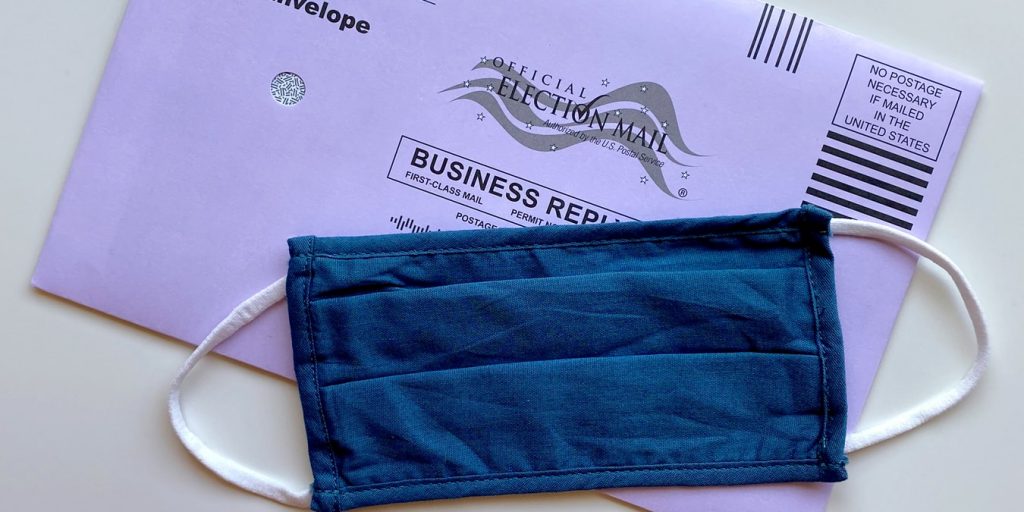How the City of Fullerton navigated adding candidates to ballots remotely
This time last year, we were all looking forward to 2020: the start of a new decade and big elections (federally and locally) were just a few of the things we were excited about as we closed out the year. Little did we know, the beginning of the end of “normal” would happen two month later — a global pandemic changed the way we go about our day-to-day lives — and forever alter how we run our local government in Fullerton, Calif. However, the unique situation accelerated many of these inevitable, positive changes.
At the beginning, it was difficult to anticipate how long the pandemic would last in the U.S. Unfortunately, it became clear fairly quickly that this “new normal” — working remotely and having to provide services to our citizens accordingly — was here to stay. Here in Fullerton, we had to quickly pivot operations in order to ensure uninterrupted day-to-day processes but also put a plan in place to navigate the upcoming local election. Prior to the onset of COVID-19, local city council candidates in Fullerton filed in-person using manual forms. However, all of this changed in June when California Gov. Gavin Newsom granted temporary approval of remote candidate processing.
Moving election processes digital
Fullerton begins its election preparation in March, but the pandemic and rule changes around eligibility delayed our planning through June. However, once the state gave the green light to proceed with an electronic candidate process, it was full steam ahead.
We enlisted the help of Laserfiche staff and solution provider ECS Imaging to work through initial logistics and discovered it would take only a few weeks to implement an electronic candidate process using Laserfiche Forms, which was a technology we already used throughout several city departments — making it a win-win for all involved. Our Laserfiche team had to learn the local elections vernacular and they quickly immersed themselves in all the documents and processes involved. In addition, we needed to tackle the task of communicating the new process to candidates.
To understand how much change went into the ballot submissions process, you first need to understand the process prior to COVID-19. Normally, I meet with city council candidates in person for an hourlong meeting to discuss the process, collect some paperwork from the initial meeting and review the checklist of times due at time of candidate filing. Candidates receive a lot of information and a handbook for reference during these in-person conversations. Online filing allowed candidates to access information at their convenience and go at their own pace leading up to the candidate filing deadline.
Once we launched the online city council candidate submission process, we scheduled online meetings with asipiring candidates to replace the in-person meeting. Candidates then uploaded the required documents from the initital meeting to Laserfiche Forms. This allowed us to maintain the essential communication required for the filing process without requiring a trip to City Hall during COVID lock downs. In addition, staff can more easily manage electronic records than the stacks of paper from in-person meetings. While we still required some documents in original form with wet signatures, this online process significantly reduced the amount of in-person contact, keeping both candidates and staff safe.
As most elections officials know, candidates rarely bring in all paperwork fully and accurately completed. With online filing, the offfical does not need to wait while candidates fill out forms in the office or have to return documents for correction. Laserfiche Forms can require the completion of certain fields and/or use validation rules to ensure the response meets requirements — a huge time saver for staff and the candidate.
The future of elections in Fullerton
The 2020 election will serve as a key reference point as we think about future local elections. The governor’s executive orders gave us temporary permission to provide more services in remote and electronic fashion. It is very likely that public demand will generate legislation to make at least some of these accomodations permanent fixtures in the way we do business. After all, the best trip to City Hall is the one you don’t have to take.
In the meantime, we’ll work to improve the online filing process without an immediate deadline and election looming. We will look to add more forms, add FAQs, embed instructional video with the forms, add a chatbot or AI tool to our website to answer simple questions. The more staff can to do create a positive experience for the public and good working relationship with our future council members, the better.
Our bigger goals with the process include Laserfiche Forms intergration to verify the candidate’s voter registration and district residency and, when allowable by legislation, including e-signatures.
This isn’t the end of our digital transformation. When it comes to process automation, you’re only limited by time, money and imagination. We will continue to work with Laserfiche and use its technology to include more features such as integrations with the county to forward election documents for processing, and automatically update our website with candidate filing information and access to public documents. Additionally, because most California cities follow the same elections process, we hope other jurisdictions can also use this process and modify it for their specific jurisdictional requirements.
From a business continuity standpoint, providing electronic services to our public makes sense for Fullerton. The public will request more and more online services, even in non-COVID times. Additionally, our business continuity plan will be stronger if we find ourselves in another situation necessitating the provision of remote services.
We’re not alone in making these changes to our processes, either. Many local governments are moving toward a self-service model, one which allows residents to get clear information about city services and processes. The city clerk will always have a role at city hall, but that role continues to evolve as more and more processes become digital. City clerks enable their citizens to participate in the democratic process. An online system enables citizens to help themselves, which in turn helps us to do more of the valuable work that requires creative decision making, understanding and navigating legislation, and fostering important relationships with our colleagues and citizens.
As we continue to navigate this “new normal,” local and state governments must look to more process automation and digitization. I encourage other municipalities to consider options for new ways to serve their citizens. Contact your neighboring cities, attend vendor user groups and virtual training, and reach out to your professional organizaions. Share your ideas and bring of some of their innovations to your organization Let’s remember 2020 as the year of reaching out — digitally or otherwise — to help one another, in whatever capacity possible.
Lucinda Williams is the city clerk for the City of Fullerton, Calif.




















